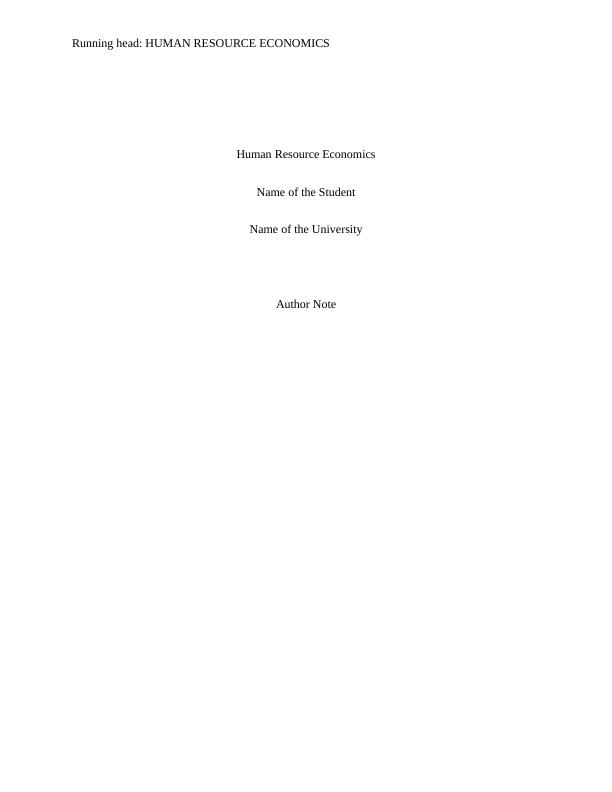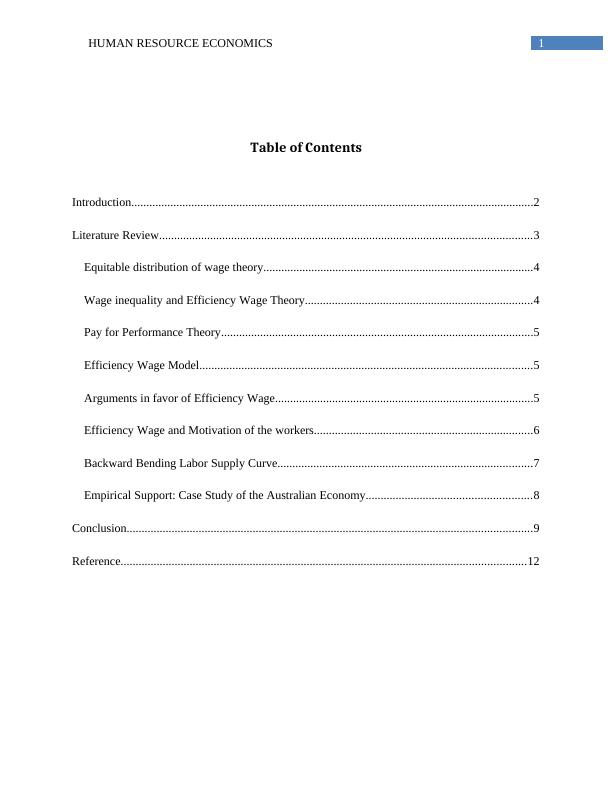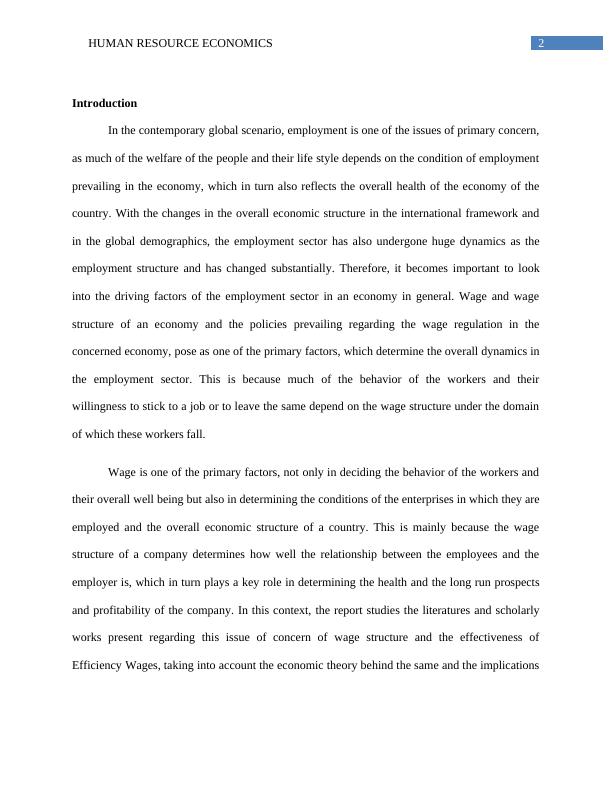Human Resource Economics - PDF
Added on 2020-04-21
13 Pages2855 Words34 Views
Running head: HUMAN RESOURCE ECONOMICS Human Resource EconomicsName of the StudentName of the UniversityAuthor Note

1HUMAN RESOURCE ECONOMICS Table of ContentsIntroduction......................................................................................................................................2Literature Review............................................................................................................................3Equitable distribution of wage theory..........................................................................................4Wage inequality and Efficiency Wage Theory............................................................................4Pay for Performance Theory........................................................................................................5Efficiency Wage Model...............................................................................................................5Arguments in favor of Efficiency Wage......................................................................................5Efficiency Wage and Motivation of the workers.........................................................................6Backward Bending Labor Supply Curve.....................................................................................7Empirical Support: Case Study of the Australian Economy.......................................................8Conclusion.......................................................................................................................................9Reference.......................................................................................................................................12

2HUMAN RESOURCE ECONOMICS Introduction In the contemporary global scenario, employment is one of the issues of primary concern,as much of the welfare of the people and their life style depends on the condition of employmentprevailing in the economy, which in turn also reflects the overall health of the economy of thecountry. With the changes in the overall economic structure in the international framework andin the global demographics, the employment sector has also undergone huge dynamics as theemployment structure and has changed substantially. Therefore, it becomes important to lookinto the driving factors of the employment sector in an economy in general. Wage and wagestructure of an economy and the policies prevailing regarding the wage regulation in theconcerned economy, pose as one of the primary factors, which determine the overall dynamics inthe employment sector. This is because much of the behavior of the workers and theirwillingness to stick to a job or to leave the same depend on the wage structure under the domainof which these workers fall. Wage is one of the primary factors, not only in deciding the behavior of the workers andtheir overall well being but also in determining the conditions of the enterprises in which they areemployed and the overall economic structure of a country. This is mainly because the wagestructure of a company determines how well the relationship between the employees and theemployer is, which in turn plays a key role in determining the health and the long run prospectsand profitability of the company. In this context, the report studies the literatures and scholarlyworks present regarding this issue of concern of wage structure and the effectiveness ofEfficiency Wages, taking into account the economic theory behind the same and the implications

3HUMAN RESOURCE ECONOMICS on the overall performance of the employees, with the newly implemented concept of pay forperformance being considered. One of the earliest and still persisting school of thoughts regarding wage structure is theEquitable Wage Theory, according to which, there should remain uniformity in distribution ofwages, which in turn increases the overall welfare of the people in a society. However, thistheory is heavily criticized on efficiency grounds, as according to this theory, the productivitybased payment structure provides more incentives for workers, thereby increasing theirefficiency and willingness to work, which is not supported by the former theory. The economic notion of Efficiency Wage Model is relevant to the above discussed payfor performance model as it suggests that keeping the wage a little above the equilibrium levelincreases the productivity of the workers, thereby increasing the overall benefit of the firms.There are, however, several debates regarding the credibility of the Efficiency Wage theory andthe pay for performance concept and regarding to what extent these theories can be applied inreality. This is because of the presence of the concept of backward bending labor supply curve,which shows the tradeoff between wage and leisure hours. The economic notions of the Efficiency Wage Theory, the backward bending supplycurve, the notion of pay for performance in contemporary employment scenario and theimplications of all these on the employment dynamics in the global scenario, have robust literaryevidences, which will be taken into account in the following section of the report. Literature Review As discussed above, with time the wage structure has changed in an overall basis as wellas with respect to different geographical locations, which in its turn have immense implications

End of preview
Want to access all the pages? Upload your documents or become a member.
Related Documents
Report on Economic Concept of Efficiency Wageslg...
|15
|3595
|126
Human Resource Economicslg...
|15
|3754
|472
Report on Human Resource Economicslg...
|12
|2633
|250
Unemployment in Australia: Types, Trends, and Impacts on the Economylg...
|13
|3115
|297
Human resource economics PDFlg...
|10
|2297
|159
Unemployment Trends in Australia: A Five-Year Analysislg...
|14
|3484
|148
